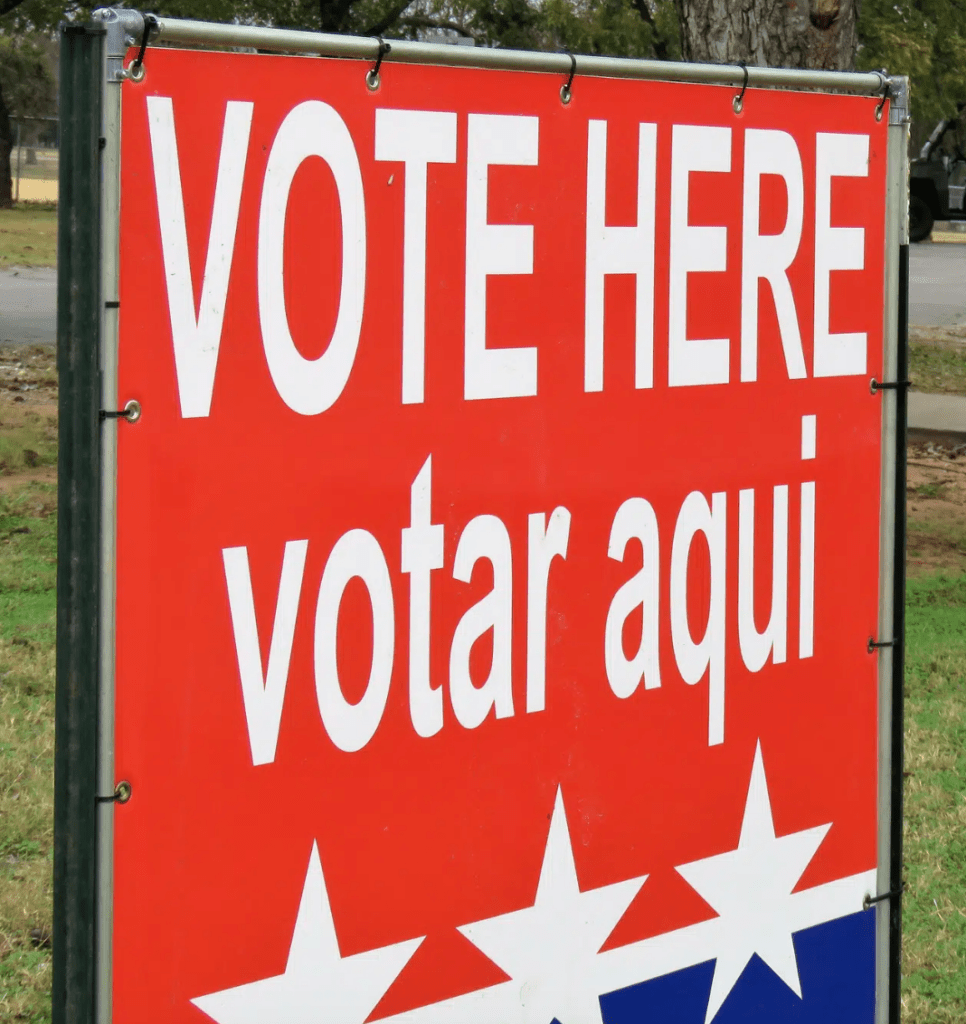Emerson Polling Looks to Unlock the Hispanic Vote

For decades, the Hispanic voting population chose the Democratic Party. But the 2020 national election cycle saw a noted swing from the left of the political spectrum to the right. That swing led Emerson Polling to conduct an expansive Unlocking the Hispanic Vote research initiative.
“It’s very important to understand why this group is swinging [to the right],” said Spencer Kimball, associate professor of political communications and director of Emerson College Polling. “The bigger picture is that the Hispanic population is growing larger.”
Hispanics now make up 18 percent of the country’s population, and the Hispanic population continued geographic spread in the 2010s, according to the Pew Research Center.
Emerson Polling research looked at where Hispanics consume media, be it local TV stations, Spanish-only stations, social media, or cable news, because it is important to understand where to reach voters.
Funded by $250,000 from Board of Trustee Robert Miller, Emerson College Polling launched the Unlocking the Hispanic Vote in April 2022 by conducting nationwide surveys and focus groups of Hispanic voters and non-voters. Surveys and focus groups asked questions to understand the Hispanic population’s attitudes and beliefs towards the economy, voting, immigration, government spending on social programs, abortion, political party preferences, and media.
The research was conducted with residents of Texas, Colorado, Florida, Nevada, Georgia, and Arizona. In each state, one survey was conducted with both registered voters and non-registered citizens. Those were followed by three focus groups: one of Hispanic voters in English, one of Hispanic voters in Spanish, and one of Hispanic non-registered citizens in English.
Dr. Laura Barbarena directed the Hispanic Qualitative research; Isabel Holloway ‘19, polling center program assistant, led the survey research; and both went to each state to conduct research.
“Focus groups are a good way to learn more about people’s beliefs,” said Barbarena. “What makes this special is we combined quantitative and qualitative data. That makes it unique, because the mixed method is rarely done. And that we talked to a segment of the population who are ignored because they don’t participate in electoral politics, so they get left out of the conversation of politics and public policy.”

Survey Says! Focus Groups, Too
To start, there is a lot of room for the political parties to encourage more Hispanics to vote. Statistically, about 50 percent of the Hispanic population votes. In comparison, 80 to 90 percent of the white population votes.
“Each survey gives a little snapshot of what’s going on in each state,” said Kimball. “[An example of] an instant result of this research was in Nevada, where we saw the Hispanic vote switching, and now polling is showing the GOP winning [in Senate and governor races].”
As often is the case amongst any voting demographics, respondents said economic issues such as inflation and jobs were among the most pressing problems facing their community. Other issues included housing (particularly in Florida, Colorado, and Nevada); crime (Texas and Colorado); social justice (all states); drugs (Arizona and Colorado); and COVID-19 (Texas).
The economy is such a dominant issue that research showed that participants were willing to look past former president Donald Trump’s racism because they feel the economy was better with him as president, even though many participants personally saw increased racism.
“That shows how important economic conditions are, and what they’re willing to tolerate,” Kimball said.
Immigration was a big issue, as it seems like everyone has had or knows someone who’s had issues with immigration.
Survey research also found that cable or network news were the top sources used, followed by social media and local news. Print news was at a low of between 7 and 11 percent. At least 70 percent of survey participants said they used social media to some degree to get news. Social media usage for news was higher among non-registered citizens.
“We’re learning the modes in which people get their news have definitely changed,” said Barbarena. “Traditionally it was NBC, CBS, and ABC. Now it’s become less so, and people are getting it from social media and their cell phones, and there’s the notion of self-choosing news.”
Barbarena said platforms like Twitter and TikTok are changing how information is shared, and that will only increase as more apps and platforms are developed and used.
Looking at the popularity of the two major parties, Floridians had the highest positive perception of the Republican Party (38 percent), Arizona residents had the highest perception of the Democratic Party (42 percent), and the highest neutrality and apathy towards the parties was in Colorado.
Many focus group participants responded that the two major political parties use Latinos for their vote, but that there isn’t enough representation of them.
“Every state was interesting. In Florida, who did they not talk about? They’re talking about Trump and [Governor Ron] DeSantis. But no one is talking about [U.S. Senator] Marco Rubio in Hispanic voter groups,” said Kimball. “He’s supposed to be the face of the party, but he wasn’t included.”
Kimball said the amnesty policy from the 1980s under Ronald Reagan still resonates with older Hispanics, and in some communities, Reagan is a symbol of freedom within their community.
Where to Go from Here
The research is an open data source so anyone can examine it on the Emerson Polling website. The research will also be the focus of a class in the spring semester.
“Students will get to re-watch [focus groups] and come up with their own interpretations,” said Kimball. “The data doesn’t go stale immediately. There’s time to analyze it before the next election cycle, and it can be used in 2023, 2024, and beyond.”
Kimball would also like to continue the research in states such as Wisconsin and Pennsylvania, which are regarded as swing states.
He added that he’d like to conduct the same type of research of the Asian population, as they’re a growing population, too.
“The Asian vote is much larger than you expect, and there’s a very large pocket of support. We have [Boston Mayor Michelle] Wu and look at Andrew Yang [in the New York gubernatorial and New York City elections], he had a base of support in the Asian community. He may not have been the right candidate, but he showed there is potential for that candidacy,” said Kimball.
Categories